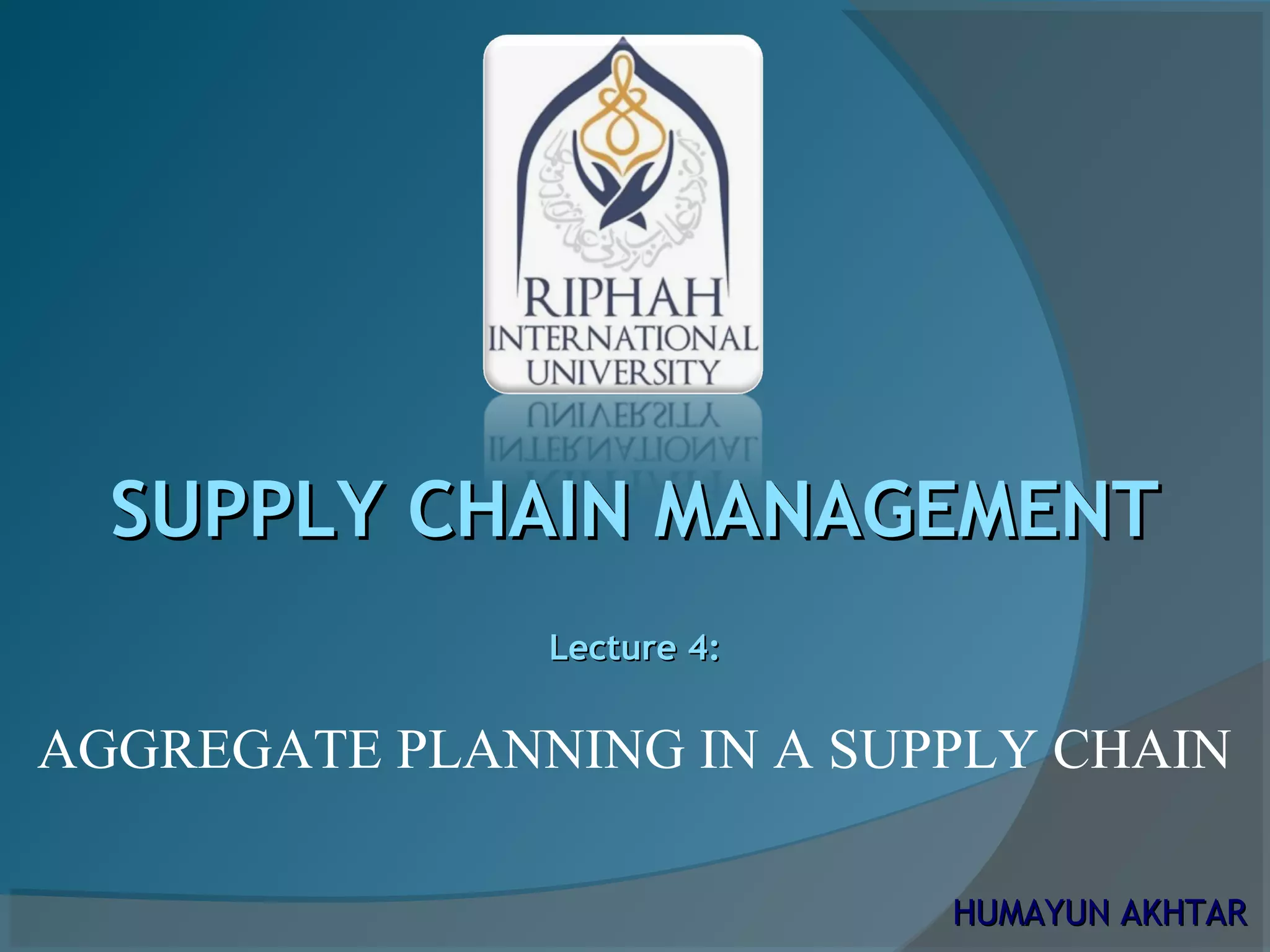Aggregate planning determines production levels, inventory levels, and capacity levels over a multi-period time horizon, such as 3-18 months. The goal is to maximize profit by balancing costs of capacity, inventory, and stockouts. Key strategies include chase, which varies capacity; time flexibility, which varies workforce hours; and level, which maintains stable capacity and output. An aggregate plan specifies parameters like production rates and inventory levels to optimize supply chain performance over the planning horizon.
















